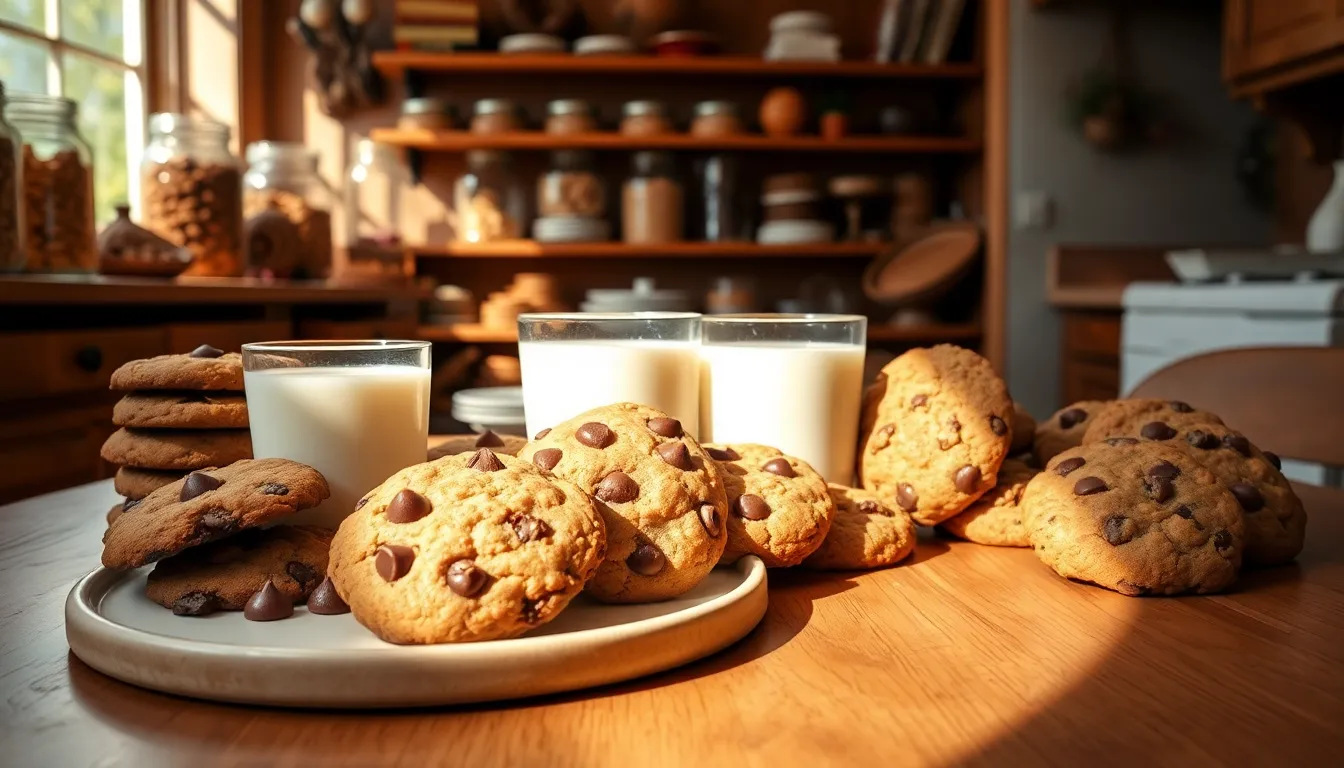Table of Contents
ToggleCookies are more than just sweet treats: they embody warmth, nostalgia, and connection. From childhood memories of baking with grandparents to modern-day holiday traditions, cookies have secured their place in the hearts, and stomachs, of many. This article delves into the multifaceted world of cookies, exploring their history, the science of baking, techniques, and how they can strengthen bonds among loved ones.
The History of Cookies

Cookies have a long-standing history, with roots tracing back to ancient times. Originally derived from the word “cake,” cookies were smaller baked goods that served as convenient snacks for travelers. As the centuries passed, cookies evolved, taking on various forms and ingredients, reflecting cultural differences across the globe.
Cultural Significance of Cookies
In many cultures, cookies symbolize hospitality. For instance, in European countries, freshly baked cookies are often served to guests as a sign of warmth and welcome. In the United States, cookie varieties like oatmeal raisin, chocolate chip, and peanut butter have become classic representations of home baking.
Traditional Recipes Through the Ages
Throughout history, recipes have been passed down through generations. Traditional cookies like gingerbread and biscotti have been cherished for their unique flavors and cultural significance. These time-honored recipes often evoke family traditions and shared moments, highlighting how cookies play a pivotal role in family gatherings and celebrations.
How Cookies Symbolize Love and Care
Baking cookies is an act of love. The time and effort spent creating these treats demonstrates care for those who will eventually enjoy them. Cookies can convey messages of affection when presented on special occasions, such as birthdays, anniversaries, or holidays.
The Science of Baking the Perfect Cookie
Understanding the science behind baking cookies can take any baker to the next level. Factors such as temperature, ingredient ratios, and baking time greatly influence cookie texture and flavor. For example, using room temperature butter creates a creamier dough, while chilling the dough before baking can enhance flavors and improve the cookie’s structure.
Essential Ingredients Explained
Each ingredient plays a specific role in the cookie-making process. Flour provides structure, sugar adds sweetness, and eggs bind the ingredients together. Understanding how these components interact helps in achieving the desired cookie outcome, whether it be soft and chewy or crispy and crunchy.
Common Baking Techniques
While the love that goes into cookies is paramount, so too are the baking techniques employed. Mastering different methods can elevate cookies from simple treats to unforgettable experiences.
Creating Memorable Cookie Experiences
Bakers can enhance the cookie experience by experimenting with flavors and textures. Incorporating ingredients like nuts, dried fruits, or exotic spices adds depth. Also, finding the right balance of sweet and salty can surprise the palate and create memorable moments.
Decorating and Personalizing Cookies
Decorating cookies is an art form that allows bakers to express creativity. Icing, sprinkles, and edible glitter can transform a standard cookie into a personalized masterpiece. For special occasions, themed decorations can add flair and make for delightful gifts.
Sharing Cookies with Loved Ones
Baking cookies is only half the joy: sharing them is where true happiness begins. Cookies bring people together, creating bonds through shared experiences.
Cookie Gifts: Ideas for Every Occasion
Cookies make wonderful gifts. Whether it’s a batch of chocolate chip cookies for a neighbor or a decorative box filled with assorted flavors for a wedding, cookies can fit any occasion. Creative packaging can turn a simple treat into a thoughtful gift.
Hosting a Cookie Swap Party
For those looking to combine their love for cookies with social interaction, hosting a cookie swap party is an excellent idea. Friends and family can bring their favorite cookie recipes, swap batches, and share baking tips. This event not only fosters community but also allows participants to try a variety of cookies they may not have baked themselves.
Conclusion
Cookies serve as a bridge between generations, cultures, and experiences. Their history is rich, their meaning profound, and their flavors endless. By understanding the art of cookie-making and the joy of sharing them, bakers can create lasting memories filled with love and care. Whether celebrating a special occasion or simply enjoying a quiet moment with a cookie in hand, the act of baking and sharing cookies remains a timeless expression of affection.





